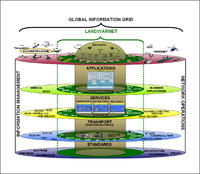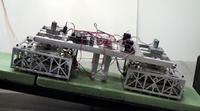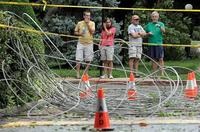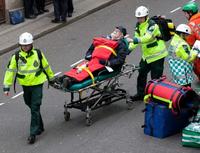-
Missouri first responders learn from last year’s tornado season
Drawing on the valuable lessons learned from last year’s record tornado season, emergency officials in the St. Louis area were ready to spring into action immediately after tornadoes swept through the state once again last week
-
-
The future of nuclear energy
While the lessons of the 11 March 2011 Fukushima disaster are being absorbed, the United States is moving forward with nuclear power; for the first time since 1978, the U.S. National Regulatory Commission has approved two new plants; the $14 billion facilities will be built just outside Augusta, Georgia
-
-
Infrastructure security, disaster planning “Super map” developed

A U.S. Marine stationed at the Quantico base in Virginia has developed sophisticated mapping software that can give users full situational awareness of their surroundings in real-time; the software is a “super map” taking in a torrent of data streams from emergency dispatch reports to weather forecasts, traffic reports, and security system alerts
-
-
Critics: current chemical safety standards insufficient, should not be extended
Critics of the current chemical plant safety standards say these standard are insufficient and should be extended; critics cite EPA data to highlight the fact that current safety standards leave more than 110 million Americans at risk from high-risk chemical plants
-
-
FCC explores grating local police authority to shut off mobile networks
The U.S. Federal Communications Commission (FCC) is currently seekingpublic comment on whether it is appropriate for law enforcement agencies to shut down cell phone networks
-
-
DARPA holds $40,000 competition to test social media in disasters
To better understand how emergency responders can leverage social media tools, the Defense Advanced Research Projects Agency (DARPA) is holding the$40,000 CLIQR Quest Challenge
-
-
Snake-emulating search-and-rescue robot

An all-terrain robot for search-and-rescue missions must be flexible enough to move over uneven surfaces, yet not so big that it is restricted from tight spaces; it might also be required to climb slopes of varying inclines; researchers say the solution would be a search-and-rescue robot which emulates the locomotion of a certain type of flexible, efficient animals: snakes
-
-
N.Y. senator pushes to streamline industrial fire regulations

Last week Senator Charles Schumer (D – New York) urged the Environmental Protection Agency (EPA) to make it easier for first responders to contain industrial fires at chemical facilities by streamlining the agency’s reporting process
-
-
New York overhauls emergency response capabilities post-Irene

Last week New York Governor Andrew Cuomo proposed a series of major initiatives to bolster the state’s emergency response capabilities; the proposals specifically incorporate lessons learned from the state’s response to Hurricane Irene and Tropical Storm Lee
-
-
London holds massive Olympic security drill

Last week, in preparation for the London 2012 Olympic Games, more than 2,500 government officials, local police, and emergency responders participated in a two-day long emergency drill that simulated a terrorist attack on the city’s transportation network
-
-
Demand for Israeli security solutions remains strong -- and is growing
Homeland Security NewsWire’s executive editor Eugene K. Chow recently spoke with Koby Tanzer, a partner at Indigo Strategic Partners, an investment firm that specializes in the Israeli security and defense sector; in the interview, Tanzer discusses Indigo’s investment philosophy, how the global recession has affected defense and homeland security spending, trends in the global homeland security market, mobile device-based security solutions, and more
-
-
Raytheon unveils new law enforcement tech center
Last week Raytheon opened the doors for the first time to its new state of the art law enforcement technology center in Downey, California
-
-
Union University bolsters emergency response with GPS 911 system
In an effort to bolster its emergency response capabilities Union University in Tennessee recently installed an enhanced 911 system
-
-
9/11 first responders face three times the cancer rate
A new study found that 9/11 first responders have been diagnosed with cancer-related illnesses at three times the rate of unexposed workers
-
-
Compact helmet-display for first responders

Engineers at Physical Optics Corp. are working with DHS’ Science and Technology Directorate (S&T) to develop a helmet-mounted micro display system for first responders designed to improve their situational awareness
-
More headlines
The long view
The Surprising Reasons Floods and Other Disasters Are Deadlier at Night
It’s not just that it’s dark and people are asleep. Urban sprawl, confirmation bias, and other factors can play a role.
Why Flash Flood Warnings Will Continue to Go Unheeded
Experts say local education and community support are key to conveying risk.
